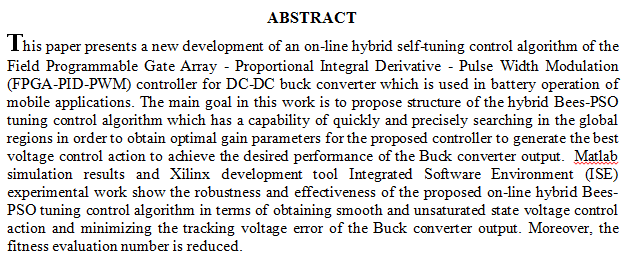
The ligand 4-(2-aminmo-5-nitro-phenylazo)-1,5-dimethyl-2-phenyl-1,2-dihydro-pyrazol-3-one derived from 4-aminoantipyrine and 4-nitroaniline was synthesized. The synthesized ligand was characterized by 1HNMR, FT-IR, UV-Vis spectra and (C.H.N) analysis. Complexes of (YIII and LaIII ) with the ligand were prepared in aqueous ethanol with a 1:2 M:L ratio and at optimum pH. The prepared complexes were characterized by using flame atomic absorption, FT-IR, UV-Vis spectra,(C.H.N) analysis and conductivity measurement. The stoichiometry of complexes was studied by the mole ratio and job methods. A concentration range (1×10-4 - 3×10-4 M) obeyed Beer's law, the complex solutions show high values of molar absorption. On the basis of physicochemical
... Show Moreچکیدهی بحث
به نظر میآید که عالم هستی ، بر مسألهی « حرکت» استوار دارد ، و روح ، همیشه دنبال دگرگونی و تکامل و برتری میگردد. حرکت ، همهی چیزها در عالم إمکان را در بر میگیرد. حرکت در بنیادهای فکر مولانا جای مهمی دارد .اشعار مولانا مقدار زیادی از پویایی و حرکت برخوردارست، و از آنجایی که فعل ، عنصر تکانبخش جمله ، و کانون دلالت است ، ترجیح دادیم - علاوه بر دیگر عنا
... Show MoreNew 1,3-oxazol-5(4H)-one(3) was synthesized by cyclization of[(4-Methyl phenyl-carbonyl)amino]acetic acid (2). The starting materials were readily obtained by acylation of 2-amino acetic acid (Glycine) with 4-methyl phenyl chloride .Imidazole(4) was synthesized by reaction of compound (3) with hydrazine hydrate (99%). Compound (4) was isolated and characterized by 1HNMR , FTIR , uv-vis spectroscopy and elemental analysis (C.H.N). Compound (4) has been used as a ligand (L) to prepare a number of metal complexes with Cr(III), Mn(II), Co(II), Ni(II) , Cu(II) and Zn(II).
The prepared complexes were isolated and characterized by FTIR and Uv-vis spectroscopy elemental analysis (C.H.N), flame atomic absorption technique, as well as magnetic
The formation of Co(II), Ni(II), Cu(II), Zn(II), and Cd(II)-complexes (C1-C5) respectively was studied with new Schiff base ligand [benzyl(2-hydroxy-1-naphthalidene) hydrazine carbodithioate derived from reaction of 2-hydroxy-1-naphthaldehyde and benzyl hydrazine carbodithioate. The suggested structures of the ligand and its complexes have been determined by using C.H.N.S analyzer, thermal analysis, FT-IR, U.V-Visible, 1HNMR, 13CNMR , conductivity measurement , magnetic susceptibility and atomic absorption. According to these studies, the ligand coordinates as a tridentate with metal ions through nitrogen atom of azomethane , oxygen atom of hydroxyl, and sulfur atom of thione
... Show MoreSynthesis of new heterocyclic compounds containing four five-membered rings together was the main goal of this work. The new derivatives of [tetrakis (1,2,4-triazole /1,3,4-thiadiazole /1,3,4-oxadiazole][bis-(benzene-1,3,5-triyl)] dioxymethylene A7-A18 were synthesized by the reaction of [bis-(dimethyl 5-yl-isophthalate)] dioxymethylene compound A1 which was previously prepared from the reaction of 1,2-dibromomethan and dimethyl 5-hydroxyisophthalate, then treated with hydrazine hydrate to yield the corresponding acid hydrazide A2. In the next step, compound A2 was refluxed with 4-substituted isothiocyanate to give substituted thiosemicarbazides A3-A6. The treatment of the latter compounds in basic medium of 2M o
... Show More (4)
(4)
 (1)
(1)
A new chelate complexes of Co(II),Ni(II),Zn(II) and Cd(II) were prepared by reacting these ions with the ligand 2-[4- Carboxy methyl phenyl azo]-4,5-diphenyl imidazole (4CMeI) The preparation were conducted after fixing the optimum conditions such as (pH) and concentration .UV- visible spectra of these complex solutions were studied for a range of (pH) and concentration which obey lampert-Beers Law.The structures of complexes were deduced according to mole ratio method which were obtained from the spectroscopic studies of the complex solutions .The ratios of metal: ligand obtained were (1:2) for all complexes..(UV-Vis) absorption spectra and The infrared spectra of the chelating complexes were studied ,this may indicate that coordination be
... Show More (1)
(1)
This research of the thesis includes the preparation and identification of two new tetra dentate Schiff's base ligand . (H4L1 ) and then binuclear complexes with a group of transition metal ions in addition to cadmium with the general formula. [M2(L1)Cl2(H2O)2] M+2=[Mn,Co,Ni,Cu and Cd] The prepared complexes and ligands were identified by in pared(FT-IR) spectroscopy ,Ultra violet-visible(UV-visible) spectroscopy and H-NMR spectroscopy of the prepared ligand, also microanalysis (C.H.N) of some of the prepared compounds has been carried out and the melting points, the molar conductivity and magnetic susceptibility
. New Schiff base ligand 2-((4-amino-5-(3, 4, 5-trimethoxybenzyl) pyrimidin2-ylimino) (phenyl)methyl)benzoic acid] = [HL] was synthesized using microwave irradiation trimethoprim and 2-benzoyl benzoic acid. Mixed ligand complexes of Mn((ІІ), Co(ІІ), Ni(ІІ), Cu(ІІ), Zn(ІІ) and Cd(ІІ) are reacted in ethanol with Schiff base ligand [HL] and 8-hydroxyquinoline [HQ] then reacted with metal salts in ethanol as a solvent in (1:1:1) ratio. The ligand [HL] is characterized by FTIR, UV-Vis, melting point, elemental microanalysis (C.H.N), 1H-NMR, 13C-NMR, and mass spectra. The mixed ligand complexes are characterized by infrared spectra, electronic spectra, (C.H.N), melting point, atomic absorption, molar conductance and magnetic m
... Show MoreAtenolol was used with ammonium molybdate to prove the efficiency, reliability and repeatability of the long distance chasing photometer (NAG-ADF-300-2) using continuous flow injection analysis. The method is based on reaction between atenolol and ammonium molybdate in an aqueous medium to obtain a dark brown precipitate. Optimum parameters was studied to increase the sensitivity for developed method. A linear range for calibration graph was 0.1-3.5 mmol/L for cell A and 0.3-3.5 mmol/L for cell B, and LOD 133.1680 ng/100 µL and 532.6720 ng/100 µL for cell A and cell B respectively with correlation coefficient (r) 0.9910 for cell A and 0.9901 for cell B, RSD% was lower than 1%, (n=8) for the determination of ate
... Show More (3)
(3)
 (4)
(4)
